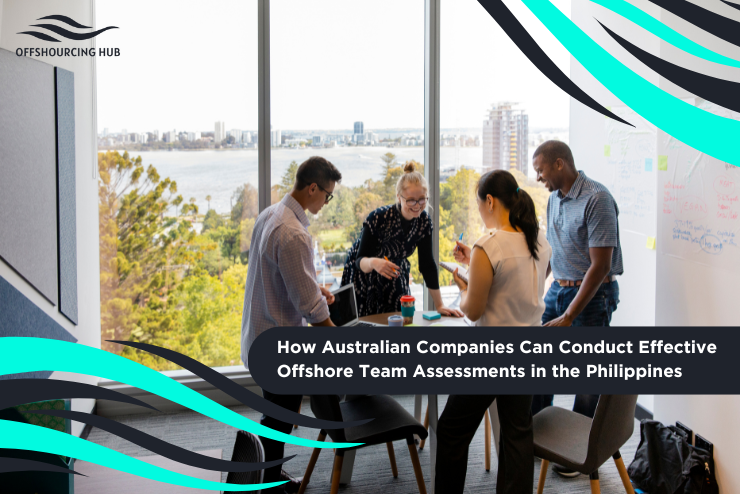How US Engineering Firms Can Start Risk-Ready Offshoring in the Philippines
- Sebastian Elliot Osborne

- May 24
- 7 min read

The U.S. engineering sector is staring down a talent crisis. With a projected shortage of nearly 2 million engineers by 2026, firms are grappling with rising project costs, tighter timelines, and increasing pressure to maintain high standards. In an industry built on precision and deadlines, these challenges don’t just slow progress—they create long-term competitive risk.
Having worked with engineering teams across both U.S. and offshore environments for over two decades, I’ve seen firsthand how strategic offshoring—when done right—can solve for both capacity and risk. The Philippines, with its strong technical education system and over 60,000 engineering graduates annually, has evolved from a low-cost CAD support hub into a strategic partner for fully integrated engineering teams. The country’s global alignment, English fluency, and maturing infrastructure make it a compelling solution for firms exploring risk management in offshoring.
In this article, we’ll break down why offshoring to the Philippines is more than just a cost-saving strategy. You’ll see how U.S. engineering firms can access specialised talent, boost operational agility, and build business continuity—while managing the real-world risks that come with global expansion. If you’re considering a smarter, more resilient way to scale, this is where to start.
Advantages of Offshore Engineering Teams in the Philippines

Offshoring in the Philippines has grown in popularity among U.S. engineering firms because it offers a smart balance between cost savings and quality. The country’s strong talent pool, combined with operational benefits, helps companies stay competitive and meet project demands more efficiently.
Understanding what makes the Philippines a top choice can help firms build offshore partnerships that support growth and reduce risks.
Cost Efficiency Without Quality Compromise
One of the biggest reasons firms choose to offshore to the Philippines is the significant cost savings.There is a marked difference between the salaries of engineers in the Philippines and those in the United States. counterparts, often 40 to 60 percent less depending on their specialization. This wage difference allows companies to reduce project costs without lowering quality.
In addition to pay, expenses like office space, equipment, and benefits are also far lower when working offshore. McKinsey's 2024 Global Engineering Services Report highlights how these savings free up resources, allowing firms to invest more in innovation and take on additional work without stretching their budgets.
Access to Specialized Offshore Engineering Talent
The Philippines is producing a large number of well-trained engineers every year—over 60,000 graduates from programs that meet international standards similar to ABET. This means offshore teams bring solid technical expertise across multiple engineering disciplines.
Most of these professionals have excellent English skills, especially when it comes to technical language. Around 88 percent demonstrate strong fluency, which helps smooth communication. Offshore engineers from the Philippines are skilled in areas like structural, mechanical, electrical, and civil engineering. Deloitte’s 2024 Global Engineering Talent Assessment highlights this deep and specialized talent pool as a key benefit of offshoring in the Philippines.
Operational Flexibility and Scalability in Offshore Operations
Philippines offshore teams can easily scale up or down according to project needs. This flexibility helps U.S. firms avoid the costs and risks of maintaining a large permanent workforce when projects fluctuate.
The time zone difference also creates an advantage. While U.S. teams finish their day, offshore teams are ready to keep working. This extends the hours available for projects and helps speed up delivery times. PwC's 2024 Engineering Project Management Efficiency Report confirms that this kind of flexibility is vital for meeting tight deadlines and managing multiple projects.
Risk Distribution and Business Continuity Through Offshoring
Spreading engineering work across locations reduces dependence on any one market. Relying only on local talent can cause delays or bottlenecks if the market tightens or unexpected problems arise.
Having teams in the Philippines provides backup capacity and helps keep projects moving even if issues affect local resources. EY’s 2024 Engineering Firm Risk Management Analysis points out that geographic diversification strengthens business continuity. For many firms, offshoring in the Philippines is more than a cost-saving strategy—it’s a way to manage risk and maintain steady operations.
Offshore Engineering Challenges in the Philippines

While offshoring offers many advantages, it’s important to recognize some of the common challenges that come with offshore outsourcing risks. Managing engineering work across borders adds layers of complexity that firms must prepare for to ensure smooth and compliant operations.
Understanding these challenges helps businesses build stronger strategies to navigate regulatory, communication, and security hurdles effectively.
Regulatory and Compliance Complexities in Cross-Border Engineering
Navigating engineering licensing and professional requirements between the U.S. and the Philippines can be tricky. U.S. engineers must meet strict licensing standards, including Professional Engineer (PE) certification, which doesn’t always directly translate offshore.
Offshore teams also need a solid understanding of local building codes and regulations, which differ from those in the U.S. Firms have to carefully consider professional liability and insurance issues when delegating engineering tasks internationally. According to ASCE’s 2024 Cross-Border Engineering Compliance Report, these compliance factors remain a top concern for companies engaging in offshore engineering work.
Quality Control and Standards Alignment in Offshore Teams
Keeping offshore teams aligned with U.S. engineering standards such as ACI, AISC, and ASCE requires ongoing oversight. This includes regular design reviews and approvals to catch inconsistencies early.
Technical documentation must maintain high quality and uniformity to avoid errors or delays. The NSPE’s 2024 Quality Assurance in Distributed Engineering Teams study highlights how maintaining consistent standards is essential for successful offshore projects, yet can be challenging without the right systems in place.
Communication and Project Coordination with Offshore Teams
Clear communication is critical, especially when dealing with complex technical terms and detailed specifications. Differences in terminology can cause confusion if not addressed upfront.
It can be difficult to coordinate critical design phases and client presentations when time zones are different. It requires careful planning to ensure all parties stay connected and deadlines are met. PMI’s 2024 Global Engineering Project Communication Study notes that overcoming these challenges is a key factor in offshore project success.
Intellectual Property and Data Security in Offshore Engineering
Protecting proprietary design methods and sensitive client information is a major priority. Offshore outsourcing risks include potential data breaches or unauthorized sharing of intellectual property.
A layer of complexity is added by ensuring compliance with cross-border data transfer laws. According to IEEE’s 2024 Engineering IP Protection in Global Teams Report, firms that prioritize robust security protocols reduce their exposure to these risks and protect their competitive edge.
Risk-Ready Implementation Strategies for Offshore Engineering Teams

Managing risks is a top priority when setting up offshore engineering teams. Without careful planning, potential challenges can disrupt projects and damage client trust. This section outlines practical risk mitigation strategies that help offshore operations run smoothly and build confidence through proven processes.
Structured Risk Assessment Framework for Offshore Projects
Before diving into offshore projects, it’s crucial to evaluate the complexity of each assignment and categorize risks by engineering discipline. Understanding client expectations, especially regarding security and confidentiality, helps focus resources effectively. The ACEC’s 2024 Engineering Risk Management Best Practices highlights that these assessments help teams prioritize challenges and plan solutions early.
This structured approach makes it easier to foresee potential issues and design safeguards tailored to each project. When you clearly identify risk areas, you can avoid surprises later and ensure smoother delivery, which strengthens long-term client relationships.
Phased Offshore Implementation Approach
Starting with low-risk, less critical projects allows engineering teams to gain experience and prove their capabilities without jeopardizing major deliverables. Gradually taking on more complex tasks creates a foundation of trust and reliability. One structural engineering firm successfully scaled from CAD drafting support to full design services, showing how a step-by-step approach builds sustainable offshore partnerships.
This phased rollout gives both clients and offshore teams room to adjust workflows, clarify expectations, and improve communication before tackling bigger challenges. It’s a smart way to manage risk without rushing or overextending resources.
Robust Quality Assurance Systems for Offshore Teams
Maintaining high standards requires thorough quality checks at multiple stages. Design reviews are performed at several levels to catch issues early, and licensed U.S.-based Professional Engineers oversee and sign off on final plans. Using consistent documentation formats ensures clear communication and reduces errors.
The ASCE’s 2024 Quality Control in Global Engineering Teams report confirms that such quality assurance methods are essential to prevent costly rework. These systems help guarantee that offshore engineering deliverables meet all regulatory and client expectations.
Technology Integration and Security for Offshore Operations
Strong technology solutions are key to secure and efficient collaboration across borders. Offshore teams use encrypted VPNs and cloud-based platforms with strict access controls to protect sensitive project data. Design updates can be managed easily with version control tools, making it easy to maintain accuracy.Autodesk’s 2024 Engineering Collaboration Technology Report points out that integrating these technologies reduces delays and safeguards intellectual property, even when team members work in different locations. Secure tech keeps projects moving without compromising confidentiality.
Legal and Compliance Framework for Offshore Engineering
Offshore providers commonly comply with stringent data protection laws such as Australia’s Privacy Act 1988 and the Philippines’ Data Privacy Act of 2012. Both align with international security standards, ensuring offshore data handling meets global requirements. Many providers also maintain ISO 27001:2022 certification, reflecting their adherence to the highest information security protocols.
In addition, professional liability insurance is extended to cover offshore work, protecting all parties in case of errors. Contract terms clearly outline responsibilities and compliance obligations to avoid misunderstandings. A notable case involved a large infrastructure firm that set up a strong legal framework for their Philippine operations, combining strict data protections and contract safeguards to manage risk effectively.
Conclusion

Offshore engineering has moved beyond simply reducing costs. It has become an essential strategy for companies aiming to stay competitive in a challenging market. Careful planning and managing risks open opportunities to work with skilled engineers in the Philippines while giving projects the flexibility they need to succeed. Emerging technologies like AI will only increase these advantages over time.
For US firms, adapting to this trend is crucial for maintaining their edge. Developing a thoughtful offshore approach that anticipates risks offers a clear growth path. The best time to prepare and make the most of offshore teams is now.





Comments